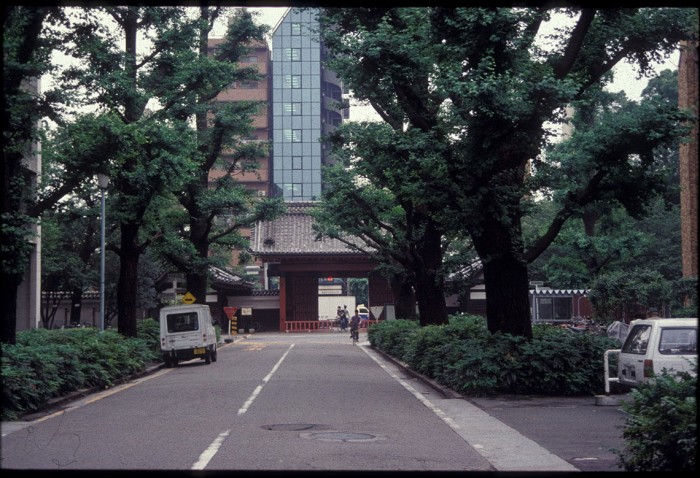
The University of Tokyo is considered the best university in Japan although Kyoto University runs a close second. Commonly called Todai which is short for Tokyo daigaku, the institution has always had a privileged place in the educational system. In this century, the university-level system evolved into seven national universities before 1945, all equal in theory, but in fact, Todai is without peer. Any serious student sets his or her sights on this university and knows that alternatives are second-rate. This perception of the university contributes to criticism of its pre-eminence; it is said to represent a feudalistic emphasis on hierarchy, but few would reject a notice of admission because of that.
Todai is not, of course, the best in all fields. In economics or business, Keio University is better; Waseda University is better in some of the social sciences; Kyoto University has a well-known institute for Southeast Asian studies. However, all of the University of Tokyo’s departments are good, and many of them are top in their field in Japan, but the university’s dominance goes back to its relationship to government.
It grew out of an institution established in the 1850s to study the West and to provide expertise on all subjects related to the West. Bearing in mind that the 19th century liberal attitude toward government (that it is a necessary evil which is not to be trusted) was absent from Japan, it is little wonder that the distinction between the university and the government was blurred for decades.
Frequently, professors of the university were called in to advise and even administer parts of the government; similarly, government officials were often sent to the university to study or to teach about the expertise they gained in the West. The distinction between
university and bureaucracy was further obscured by the fact that employees of both were considered national employees and by the exemption of Todai graduates from civil service examinations; they were given direct entry into the bureaucracy until a Higher Civil Service Examination was created and made mandatory even for Todai students. Slowly a degree of differentiation arose between the university and government.
Despite this, the natural abilities of Todai students, plus their connections with previous graduates in the civil service preserved their domination of government. Some 85% of prefectural governors from 1900 to 1945 were from the university and a 1937 survey showed that of the top bureaucrats, 74% came from Todai. Even in 1976, 35% of those who passed the senior civil service examination were Tokyo graduates.
Land which belonged to the Maeda family who were daimyo of Kaga domain during the Edo period was given to the university as it was setting up in the late Edo and early Meiji periods. The Maeda family were fortunate enough to marry a daughter to a shogun and, as was tradition, they were granted the privilege of putting red lacquer on a gate to commemorate the event. That gate has become symbolic of Todai; to enter through Akamon (The Red Gate) is to achieve the highest goal in education and to ensure future success. There is even a shop opposite the gate selling a special sweet which further eulogizes The Red Gate and is called Akamon mochi.

The university was the only university until 1897 when Kyoto University was established: private institutions of higher education existed but were not awarded university status until 1918.
Although Todai is the entry point into the Establishment, it can be as radical in its student politics as any university. During the world-wide student unrest of the late 1960s, the students closed down the university, forcing it to abandon the entire year’s academic work and forego taking in a fresh batch of undergraduates. The main gates, including Akamon, are frequently festooned with posters campaigning for or against a variety of things. The degree of radicalism may vary from time to time, but with graduation student activism dissipates quickly.

